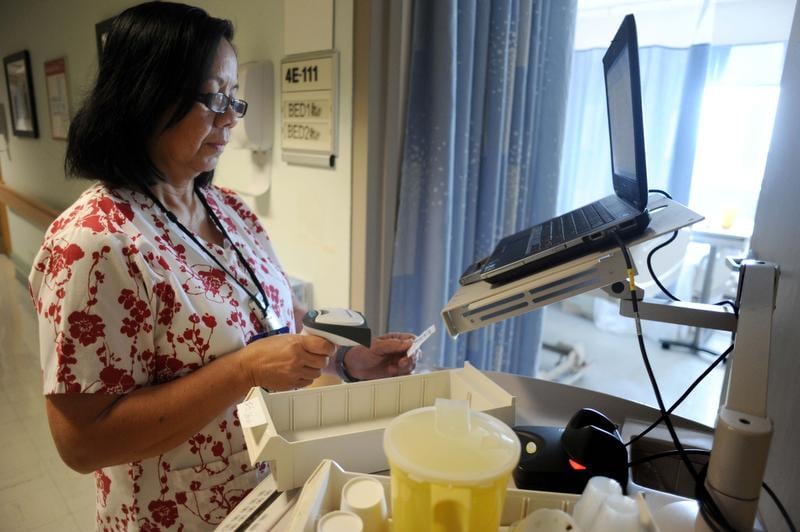It was a big week for the 1st Armored Division both home and abroad, as the 3rd Brigade Combat Team in Kuwait carried out a combined live-fire exercise and back home, the 2nd brigade completed its transition from a training unit to a deployable combat team.
Both events for the Fort Bliss, Texas-based units signal a push to reinvigorate the Army's armor branch following a decade and a half fighting insurgencies with a diminished presence of tanks and other large combat vehicles, according to brigade commanders.
On Thursday, the 2nd BCT transitioned from a training role with the Brigade Modernization Command back to operating under U.S. Army Forces Command, ahead of an August stint at the National Training Center and a subsequent deployment to a country to be named.
"I don't want to speak at the national level, but I just think the demand – what the armored brigade combat team brings to a combatant commander – is an agile force that is self-sustaining for long periods of time," brigade commander Col. Chuck Lombardo told Army Times in a Thursday phone interview.
Lombardo took command of the brigade in June, knowing ahead of time that he'd be leading the transition. The Army announced back in February, he said, that the brigade would be taking on an operational role.
"It's a pretty seamless transition," he said. "We do it by reduction. We've retained our 87 tanks and 140 Bradleys. It's almost gotten easier because we've gotten rid of the Strykers and the wheeled vehicles."
After shedding mine-resistant armor-protected and all-terrain vehicles, he said, the brigade is focused on mission-essential training in preparation for the brigade's first deployment since its 2008 tour in Iraq.
Back then, armored brigades were deploying in a more piecemeal format, with fewer vehicles to support counterinsurgency efforts in Iraq and Afghanistan. Now, Lombardo said, the armor branch is returning to its roots.
"You're going to see the brigade combat teams deploy with the integrity of their equipment more," he said. "I think you're going to see now, whether it's in Europe or Korea, it's those BCTs going with their full [modification table of organization and equipment] so we can get that geographical combatant commander the flexibility to access all of those capabilities."
Meanwhile in Kuwait
On the other side of the world, the 1st AD's 3rd brigade joined forces with the Kuwaiti military for a live-fire exercise that put the two countries' armor capabilities head to head.
U.S. and Kuwaiti tank companies teamed up with Kuwaiti AH-64 Apache helicopters, U.S. M1A2 Abrams tanks and a combined scout sniper team, swapping whole platoons so that each company had two of its own and one from the other side.
"In this particular case, the threat we're looking at is really the defense of Kuwait," Col. Lee Magee told Army Times in a Thursday phone interview.
That's the reason for the Army's continued mission at Camp Buehring, where the brigade is in its last few months of the deployment.
"I think there's an acknowledgement by the Kuwaiti military that the threat they're more likely to face is more of a hybrid threat than a conventional threat," Magee said. "But still, the worst-case scenario is a repeat of 1990, in their eyes."
Soldiers on the ground were impressed and surprised by the foreign military's strength.
"Working with Kuwaiti Apaches, I sort of didn't expect them to be as capable as United States aircraft," said Staff Sgt. Byron Jenkins, a battalion fire support NCO who was linked up with a foreign joint tactical air controller. "They proved me wrong."
The Kuwaitis also exceeded expectations on the ground.
"When we were firing, to me it was impressive to see how accurate they were with their tanks, even though they were using our same systems," Sgt. Michael Lamb, a tank gunner, said. "It was a good feeling to know that we're working with these guys, and they're as accurate and deadly as us."
And the soldiers were able to give their partners some tips to fill in their equipment gaps.
"[The land forces commander] basically told his soldiers, 'Hey, if the U.S. has something that we like, let me know what it is and we'll go see if we can buy it for our brigades.' "
Before the 3rd BCT comes home, Magee said, they'll continue partnership exercises to work on their expertise.
"I think the Army cut too far back in its armored brigade capacity," Magee said. "But the capability that we bring to the joint force is one of the capabilities that we have to maintain – if for no other reason than for the deterrent value of the armored brigade, and the shock value that formation brings to the joint force."
Meghann Myers is the Pentagon bureau chief at Military Times. She covers operations, policy, personnel, leadership and other issues affecting service members.





